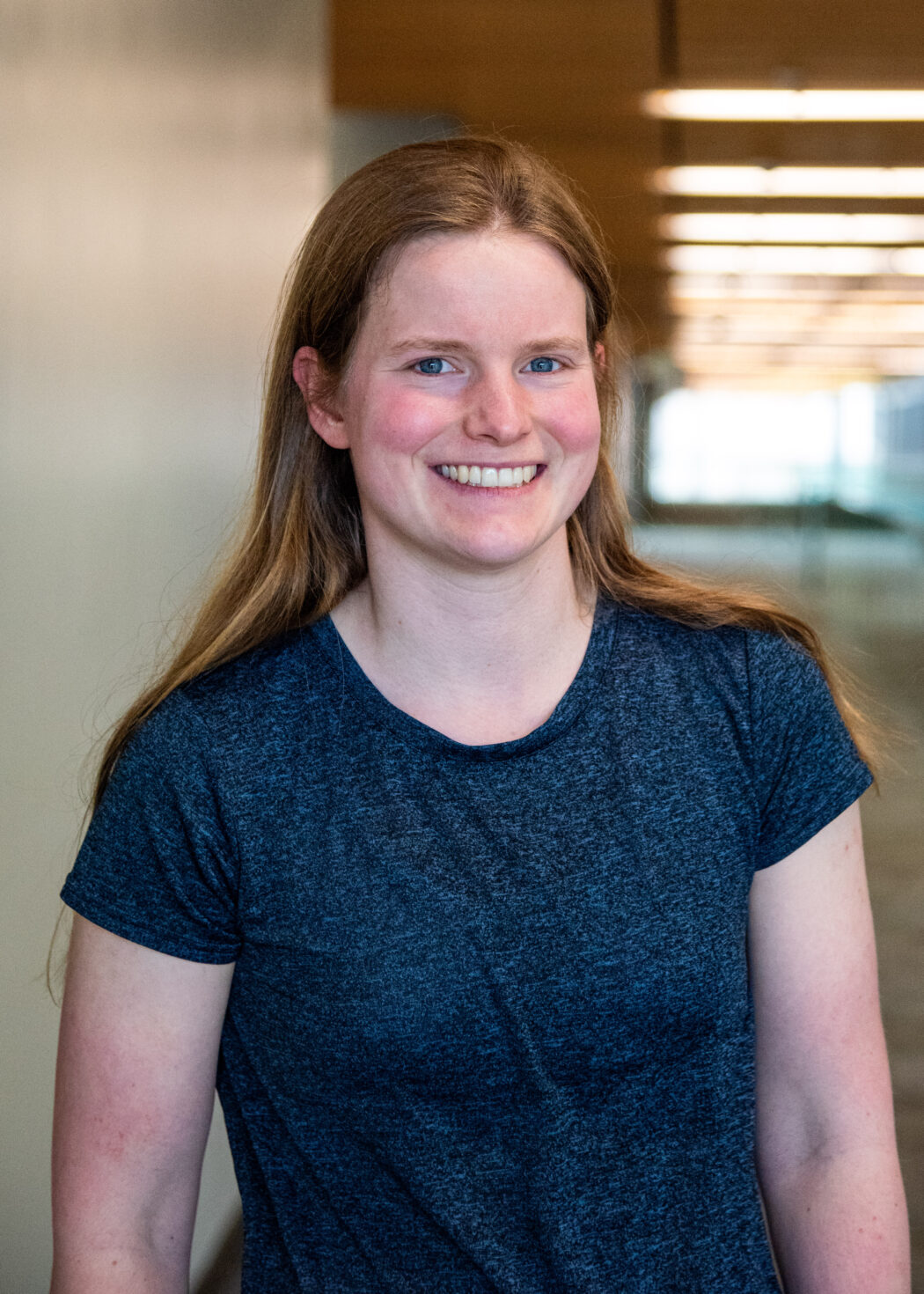Emeline Haroldsen: The limit does not exist
Emeline Haroldsen is a passionate student at Utah State University graduating this spring with a dual-major in biochemistry and math and statistics composite and a minor in data science.
Her journey at USU began in the College of Science with a focus on pure mathematics, but she found her true passion at the intersection of math and biology, leading her to switch to a math and statistics composite major.
“I feel like some people perceive STEM as being really hard, which it is hard, but STEM people are the people that are running the world.” Haroldsen said. “People love to separate the STEM fields and the non-STEM fields but I’ve always found that things aren’t separated the way that we think they are,” Haroldsen said.
Originally from Maryland, Haroldsen grew up in a family deeply rooted in math and science. Both of her parents are Aggies. Her mother pursued civil engineering, while her father studied mathematics and physics.
Since she was young, Haroldsen always knew she wanted to follow in her parents footsteps and pursue a career in math or science.
“When you grow up in an environment where math is not hated, you realize that it’s not something to be scared of. It’s something that’s approachable,” Haroldsen said.
She restated a phrase her mother once told her: “The world does not have a lot of room in it for mediocre artists, but it always has room for another mediocre scientist.”
She always knew she was interested in mathematics and learning everything.
Haroldsen was named College of Science Scholar of the Year, a very prestigious title that shows her hard work and dedication to her education. She has also won two research grants, the Frost Award in organic chemistry and an award for undergraduate research.
Outside of her academics, Haroldsen enjoys staying active through weight training, running, basketball and pickleball. She also has a creative side, and can often be found doodling in her notebook or playing the piano. Despite her busy schedule, she finds joy in soaking up the sun and spending time outdoors.
“I love anything active. If it’s outside, that’s a bonus for me,” Haroldsen said.
Haroldsen’s favorite part of her USU experience has been her involvement in undergraduate research. She appreciates the hands-on experience and the connections she has made through research and wishes she had started sooner.
“Hands down, the most valuable, most important thing I have done here at USU,” Haroldsen said.
Haroldsen’s main mentor at USU is Joanie Hevel, who introduced her to biochemistry research and provided guidance throughout her academic journey. Her sophomore year, Haroldsen was in Biochemistry II with Hevel.
“By the time the semester was wrapping up, I just knew I had to be in research,” Haroldsen said.
She knew Hevel was the head of undergraduate research for biochemistry, so after class one day, she approached her about any research opportunities and was happily surprised when Hevel said there was an opening in her own lab.
“She has been a phenomenal research mentor, one of the best mentors I’ve had. She’s always pushed me to be better, and to keep earning and provided the support that I need to keep pushing,” Haroldsen said.
John Stevens, head of the math and statistics department, has also been instrumental in supporting Haroldsen’s exploration of the intersection between math and biology. He mentored her while working on a bioinformatics project.
“He’s very supportive and patient, and it’s comforting to know that if I have a major problem, I can go and talk to him about it,” Haroldsen said.
After graduation, Haroldsen plans to pursue a Ph.D. in computer science at Johns Hopkins University.
“I’m really excited. The professor I’m really interested in working with is in the biophysics department. One of the cool things about computer science is that you get to play in everyone’s backyard,” Haroldsen said.
Haroldsen’s dream job involves staying in research while also delving into entrepreneurship. She aims to develop tools other researchers can use to advance their work and make a meaningful impact on society.
“I want to stay in research but would love to be more of an entrepreneur and take what I’m learning and impact people. I want to do something that is going to help us push even further forward,” Haroldsen said. “STEM science is very creative. If it wasn’t, we wouldn’t always be moving forward.”
Haroldsen said understanding how she learns, her intensity and work ethic are her greatest strengths.
“I learned that I can’t do well in school without studying. I realized early on that I would need to work hard to do what I wanted to do and do it well,” Haroldsen said. “Hard work beats talent, when talent doesn’t work hard.”
She also shared asking questions is a vital part of being in a STEM major.
Haroldsen advises future STEM Aggies to get involved in research early on and not to be afraid to talk to people.
“Research helped me decide to go to graduate school, helped me find what I’m passionate about and what I’m really interested in, and it’s made me realize how much we don’t know,” Haroldsen said.
She also emphasizes the importance of networking and mentorship in the STEM fields, stating connections are crucial for finding opportunities and succeeding as a scientist.
“If you want to go far, especially in a STEM field, you have to have connections,” Haroldsen said.
Haroldsen encourages students to push themselves and not let the fear of difficulty deter them from pursuing their passions. She said you can do so many things with a STEM degree.
“Don’t let the thought, ‘It’ll be too hard’ deter you from your path. If you put your mind to it, you can do anything,” Haroldsen said.
You must be logged in to post a comment.


There are no comments
Add yours